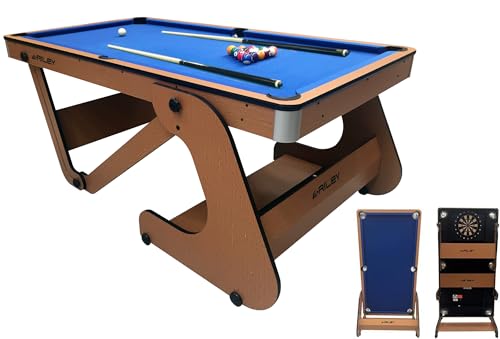The Basic Structure of a Snooker Table
A snooker table is a rectangular playing surface with dimensions that are standardized across professional and recreational levels. The table is typically made of a heavy, solid wood frame with a surface covered in a form of baize, a type of cloth. A typical snooker table measures 12 feet by 6 feet, with six pockets and a set of rails surrounding the playing area.
The Baize Cloth
The baize cloth is an essential component of a snooker table. It is typically made of a smooth and durable wool material. The cloth’s primary function is to provide a consistent playing surface, ensuring that the balls roll smoothly. It is usually green in color, although different shades are occasionally used at professional tournaments for visual variety.
The Playing Surface and Markings
The flat playing surface of a snooker table is divided into several areas, each serving a specific purpose during the game. These areas include:
- The Baulk Area: Located at one end of the table, the baulk area is where the game begins with the cue ball placed within it at the start of each frame. It extends from the edge of the table to the baulk line and is delineated by a thin white line.
- The D: Positioned at the center of the baulk line, the D is a semi-circular area which serves as the starting point for the cue ball on each shot.
- The Spots: There are several spots marked on the snooker table, each serving a different purpose. The black spot, located at the intersection of the D and the baulk line, is the starting point for the black ball during each frame. There are also spots for the pink, blue, brown, green, and yellow balls.
- The Rest of the Table: The remaining portion of the table is divided into areas called the top, bottom, left, and right cushions, which are marked by physical railings. These surfaces come into play when players attempt to pot balls into the pockets or achieve position for subsequent shots.
The Pockets
A snooker table features six pockets, one positioned at each corner and an additional one centered on each long side of the table. The pockets are where players aim to pot the balls during the game. The openings are slightly wider than the balls to allow for successful pots, but they have curved edges that make precision shots and position play more challenging.
Other Components
In addition to the core elements of the snooker table, there are a few other components that contribute to the overall playing experience:
- The Cushions: Also known as the rails, the cushions surround the playing surface and are made of rubber. They provide the necessary bounce for the balls during gameplay.
- The Frame: The frame of a snooker table is typically constructed from solid wood and provides the structure and rigidity needed for a stable playing surface.
- The Ball Set: Snooker is played with a specific set of balls, which include 15 red balls and six colored balls. The balls are made of phenolic resin and have specific weights and dimensions.
- The Cue: The cue is a long and slender stick used by players to strike the cue ball and pot the other balls. The cue is often made of wood, although modern cues can also be constructed from other materials like carbon fiber or fiberglass.
In conclusion, a snooker table consists of several distinct parts that work together to create an ideal playing environment. From the baize cloth and playing surface markings to the pockets, cushions, and frame, each component has a specific role in allowing players to enjoy the game of snooker.






